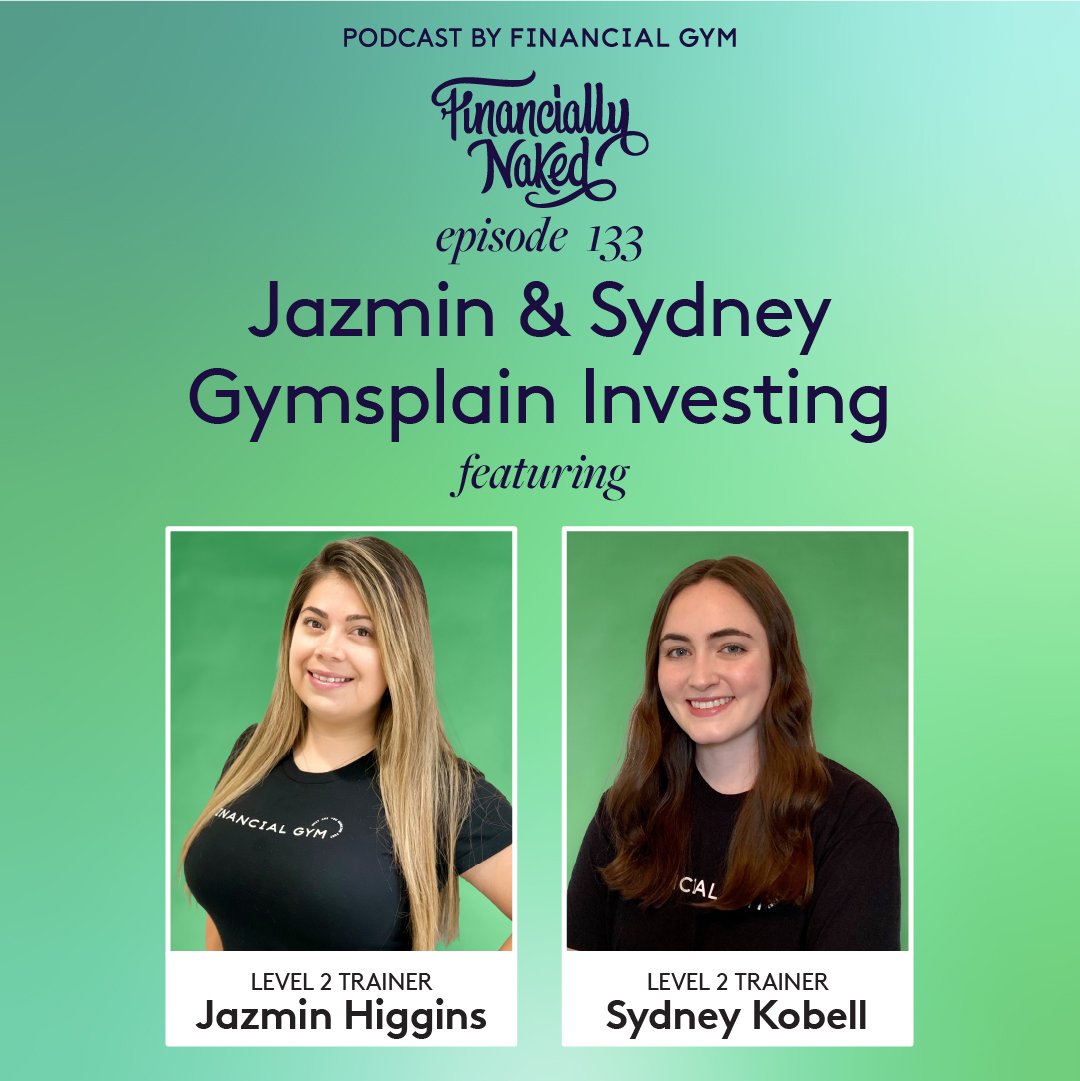Jazmin & Sydney Gymsplain Investing
Investing is one of the most common goals clients have at The Financial Gym and is a popular topic in financial media, especially as of late. There have been more questions than ever about investing, so on this episode of Financially Naked: Stories from The Financial Gym, two of our Certified Financial Trainers, Jazmin and Sydney sit down today to talk about it. They discuss the order of operations for creating a strong financial foundation and how to start your investing journey from there.
Podcast Notes
When it comes to investing, the best time to start is as early as you can, but there are a few other financial priorities to check off the list before diving in. At The Financial Gym, there is a specific order of operations Trainers typically recommend for clients.
The first priority is an emergency fund. It is important to be prepared for the short term before investing in long-term goals.
Learn more about emergency funds: Using Your Emergency Fund
The next step is to address high-interest debt: usually credit cards or personal loans. Lower interest debt (like student loans) is a separate part of the conversation and is not as pressing as higher interest debt.
Learn more about managing debt: Debt & Credit Management Gymsplained
Once those first items on the checklist are taken care of, it is time to start investing!
Often when people hear or think about investing, it is in regards to purchasing individual stocks or cryptocurrency. Before diving into those, start with retirement investing. Setting yourself up for the future should ideally come before other investment goals.
If offered through the workplace, employer-sponsored 401k’s (or 403b’s, etc) are a great place to start. If you’re contributing to a retirement plan, you are already an investor!
If they offer a match, and it’s within your budget to contribute up to that match, that is ideal.
If a 401k isn’t available through the workplace, or you’re already maxing that out, the next account to consider, if you’re eligible, is a Roth IRA.
The next consideration would be other tax-advantaged accounts, such as 529 plans or Health Savings Accounts.
Investing outside of retirement:
The first step is to ask yourself the question: what am I investing for?
It is important to figure out what you are investing for and the timeline for that goal. Asset allocation is a key part of investing, and the timeline is a huge part of deciding that.
Bonds carry less risk than stocks, but stocks have a greater rate of return, so you want to have a little bit of both.
For example, a shorter-term goal could be 75% stocks and 25% bonds.
If the goal is 10+ years away, long-term asset allocation would look more like 90% stocks and 10% bonds.
This is broad advice and it truly depends on a few variables including your personal risk level.
Once you have the goal, put a system in place! It’s about figuring out what works best for you and following those systems. Trainers typically recommend:
Setting up recurring contributions and making them automatic. Automating is one of the best ways to stay on track. It’s how most 401k plans are set up, and you can set that up for your other investment accounts too!
If you are looking for an easy way to get started robo-advisors can be a great option. These are digital platforms that will help you invest money based on your goals and timeline. You answer some questions, and the algorithm does the work for you.
Because they are doing the work for you, these robo-advisors generally have fees, but they are less intimidating, especially if you are just getting started.
Investing is one of the most common goals among clients at The Financial Gym, and we know a lot of people want to dive in, but it can feel overwhelming.
If you want a Financial Trainer to hold your hand through the journey and provide a custom plan so you can reach your goals faster, chat with our warm-up call team about the Accountability Program!
If you want to work with a Certified Financial Trainer on your investing-specific goals, check out Trainer on Demand where you can meet with us once a month to talk through your questions.
Read More About Investing:
Investing 101: What are Investment Markets
The Other Gender Wealth Gap, The Investing Gap
How to Invest For Your Child’s Future
Why Should I Invest In a Socially or Environmentally Responsible Way?
Tools to Invest in the World You Want

